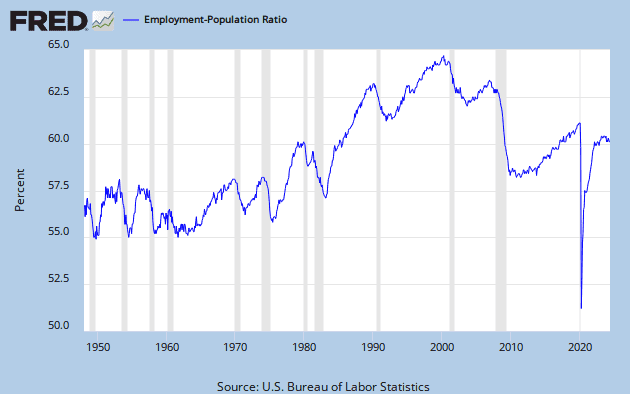edthecynic
Censored for Cynicism
- Oct 20, 2008
- 43,044
- 6,883
- 1,830
a measly 74,000 jobs created and the unemployment rate falls.....?
the "unemployment rate" that they dish out in the media is a total political LIE.....since they don't 'count' certain groups of people who stop working or looking for work....
Why should people who don't want to work, like retirees, stay at home spouses, students over 16, adults staying home to care for a sick or elderly family member, etc. be counted as part of the workforce?

The unemployment rate fell because 490,000 people left the ranks of the unemployed mostly because they found jobs! That is why UE is going down even though a small number of NEW jobs were created. You have been lied to when you were told the U-3 rate went down because people got discouraged and dropped out.
Take the current month, the unemployed declined by 490,000 but the discouraged increased by only 155,000 and the difference are the unemployed who filled jobs vacated by retirees. This is why people who say that new jobs have not kept up with population growth are full of it. More seniors are retiring than workers entering the labor force.
The BLS does not give the number of retirees, but they do give the number of discouraged workers, which was 155,000 for last month. We can calculate reasonably accurately the number of retirees because we know that 10,000 reach age 65 per day and only 18% stay in the workforce, up from 15% before the Boomers. So 82% of 300,000 Boomers reaching 65 = ~246,000 Boomers leaving the workforce every month on average. Since we can expect those jobs to be filled by other workers we would expect to see a decline in the number of unemployed to be about equal to the sum of retirees plus discouraged plus the 74,000 new jobs created which totals ~475,000. According to BLS the unemployed declined last month by 490,000.
But the Right has always known this and were using the predicted decline of the LPR after the 2004 election as justification for privatizing SS. As soon as a Republican is elected, the Right will stop saying the decline in LPR means a bad economy and will resume saying that a declining LPR is a reason for privatizing SS.
Mark my words!
Last edited:



